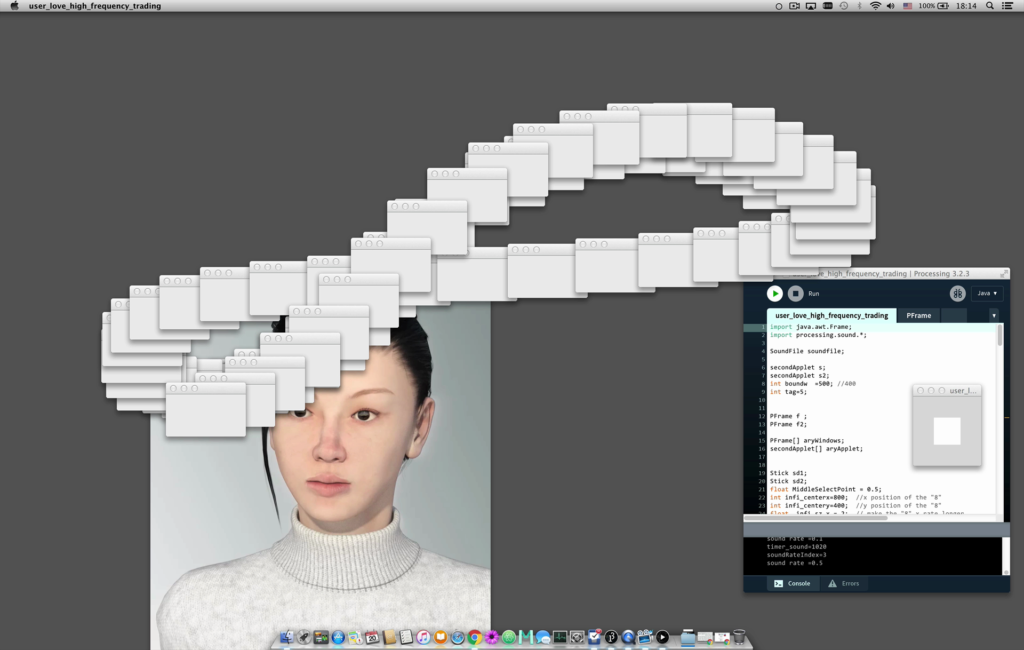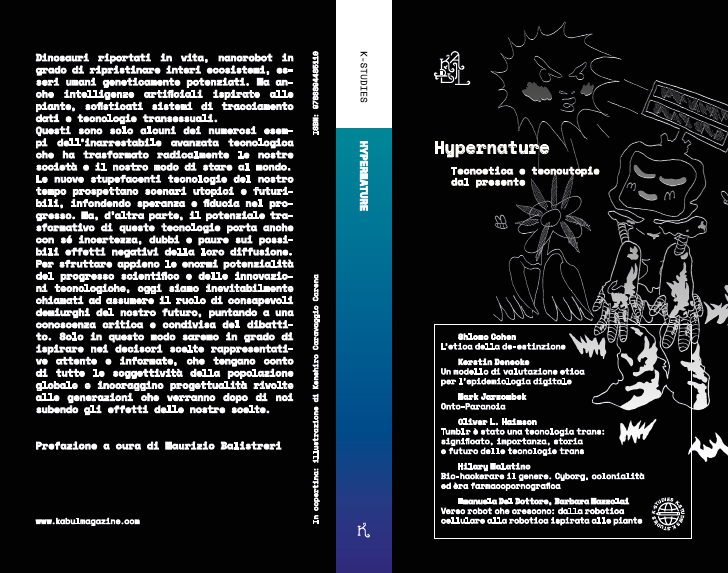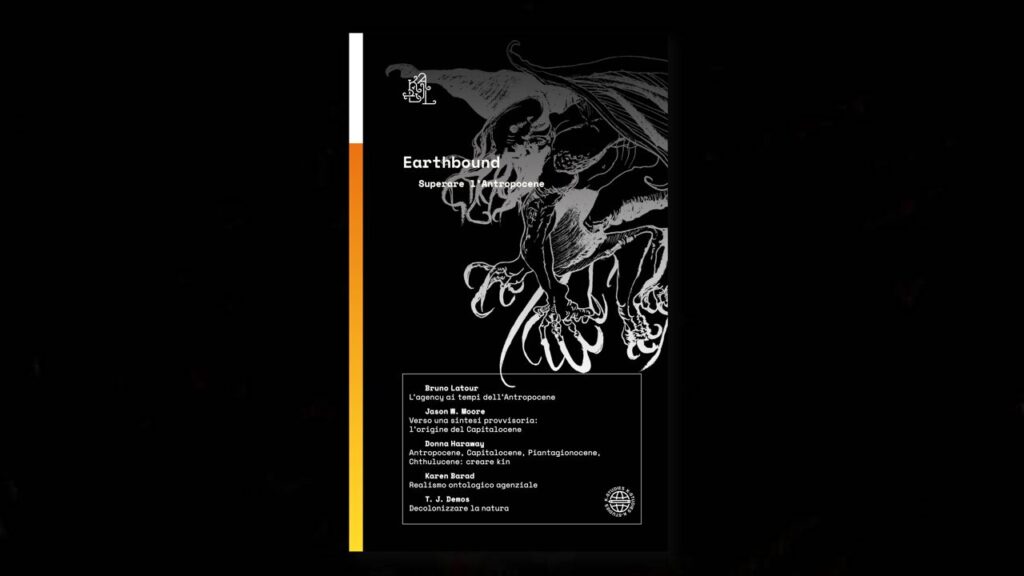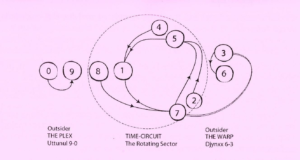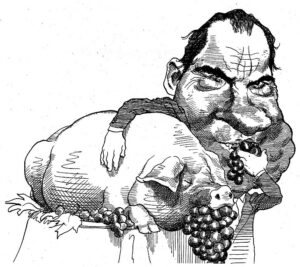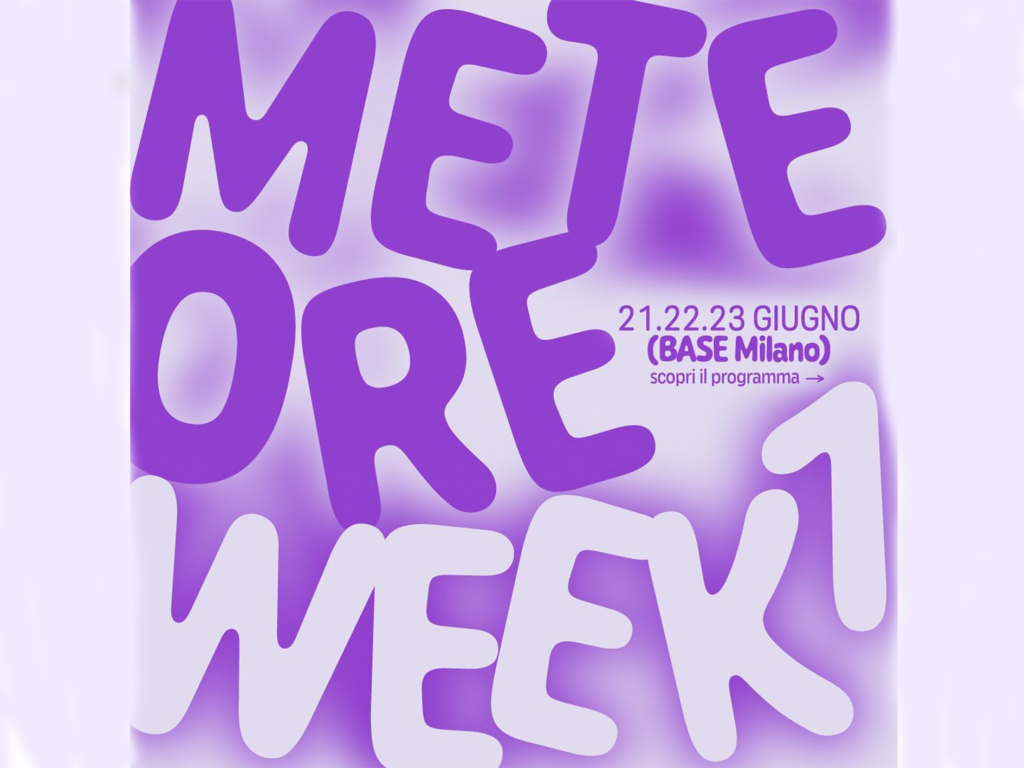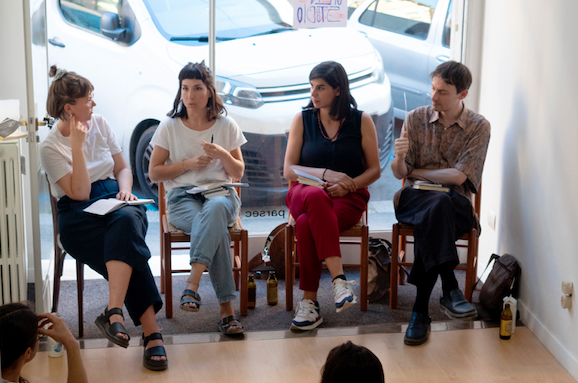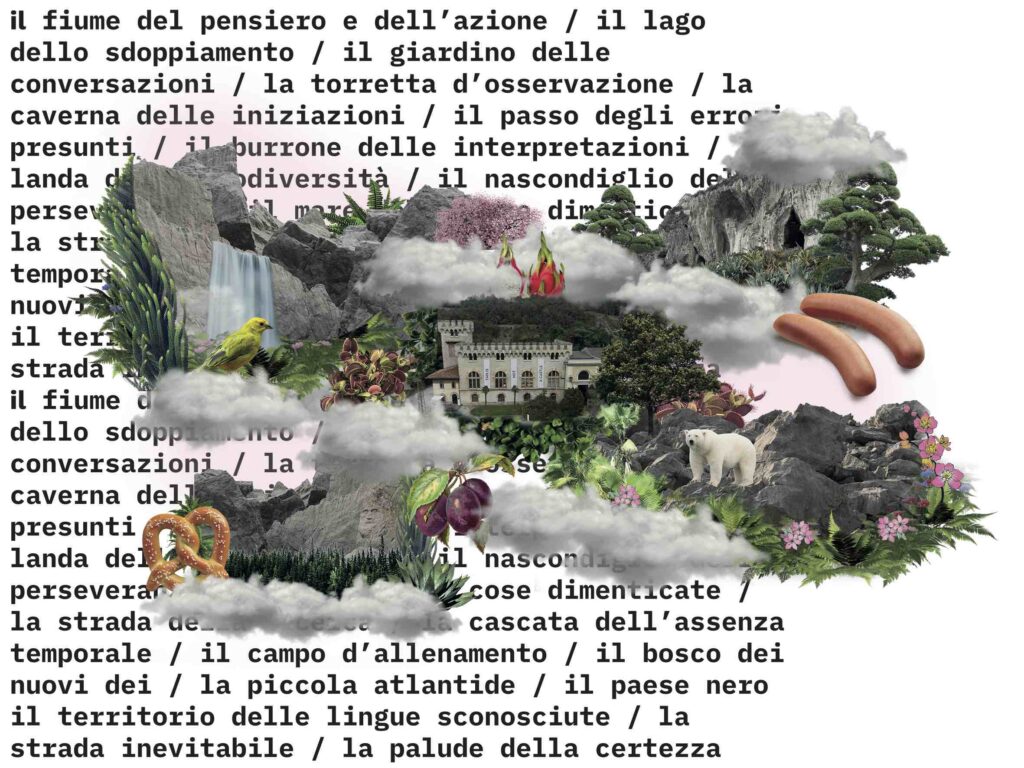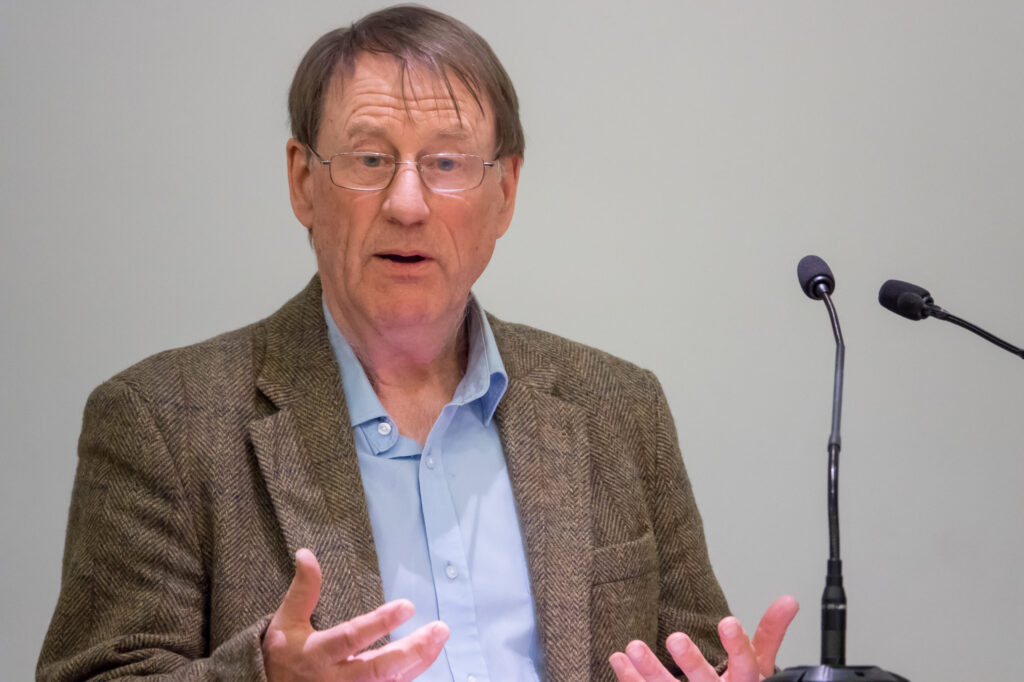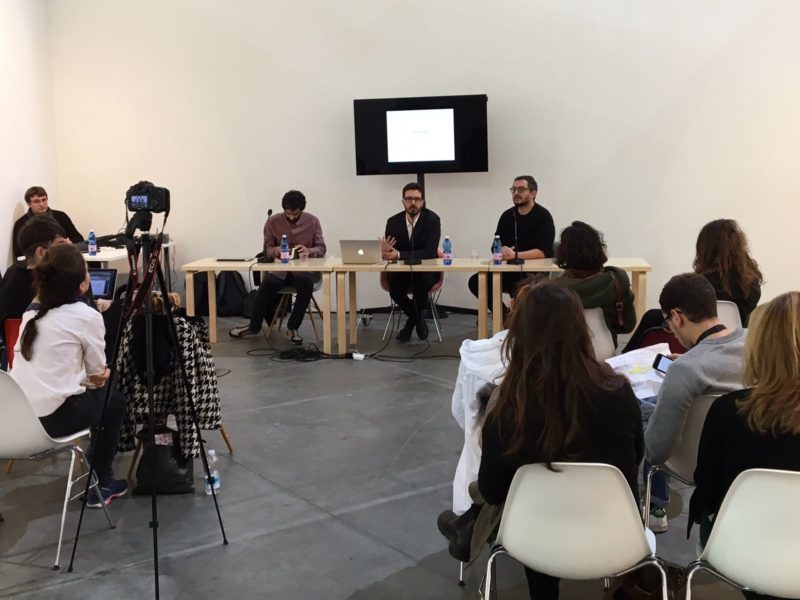 Map of the European Migrant Crisis – 2015.
Map of the European Migrant Crisis – 2015.
A definition points to the essence of a phenomenon, for this reason a definition allows to clear up those misunderstandings that do not help to develop a precise knowledge of the subject. Globalization is an economic process that leads to the connection and interdependence of markets, production, consumption, ways of living and thinking on a world scale. Although the term has been coined recently, one cannot say that globalization is a new phenomenon. At the base of globalization is a very simple principle: the faster are traded goods, services and ideas the more the world becomes interdependent and interconnected. There is a strong correlation between globalization and mobility.
Tracing back the history of technological innovation, we realize that every innovation that improves mobility will raise the degree of interconnection and interdependence of markets, production and consumption. It is important to try to date the beginning of globalization and connect it with certain technological innovations. Although there are scholars who go back to the trade links between Sumer civilization and Indus civilization in 3000 BC, for simplicity, we will fix the start of globalization in 1492. Although other populations had already crossed the oceans, the discovery of America and the commercial consequences that ensued were possible thanks to the new technique of boats construction.11See A. Gunder Frank, Reorient: Global economy in the Asian age, U.C. Berkeley Press, 1998.
See T. Friedman, The world is flat 3.0, MIT video, 28 Nov. 2007.
In 1451, in fact, Henry the Navigator, King of Portugal, promoted the development of the Caravelle (Caravels) – in this case the initiators of the globalization process are nation states.22A. Konstam, The History of Shipwrecks, Lyons Press, New York 2002, pp. 77-79.
It is useful to add that the discovery of huge deposits of silver in the Americas and its subsequent use for the production of currency drove down the cost of production, thus making money a more agile and cost-effective means of payment. Obviously, money already existed before the discovery of America, but having lowered the cost of production has allowed for greater dissemination and use of money, thus increasing the volume of trade in the market.
Another key date for globalization is the 1800. There are several technological innovations that drive the globalization process at this stage: the steam engine applied to transport, electricity, chemicals, oil. This second stage of the process of globalization is driven by companies, which within a few years would become multinationals. These innovations allowed on the one hand to increase the production of consumer goods, on the other hand to reduce shipping costs. At this point new markets to reach were needed, also through the use of military means. Although still important for globalization, states, here, take an instrumental role with respect to the objectives of the commercial companies. Between 1839 and 1860 occurred, for example, the Opium Wars between China and the Western powers in order to facilitate market penetration in the East. From this time on, in a few years, it would begin «the scramble for Africa», with the double objective of expanding the global market and have access to cheap raw materials.
Leaving aside Malcolm Mclean’s fundamental insight in 1956, that of developing the containers for international shipping, we move to the years 2000. The investments made in new technologies to increase broadband access, the improved means for software communication, the lowering prices of PC, the improvement of search engines have driven globalization through a new phase. Thomas Friedman very accurately describes this phase with the motto «the world is flat», in the sense that it becomes irrelevant where you are. This brings to the centre of the process of globalization the individual and his or her individual capacities to keep pace with technological innovation. At this stage, the multinationals can still take advantage of the ample benefits due to globalization, enjoying the possibility of increasing the working time, given the ease with which some production processes can be fragmented in time and space.
The process of globalization driven by technological innovations has reduced the distances and at the same time it has increased the speed of travel along such distances for people, goods and information. Given the historiographical examples that we have provided, it is helpful to try to categorize the actors of the globalization process. Following a classical setting, one should include the dichotomy capital-work.
As regards the first, it has always funded the technological innovation, provided that this was in some way measurable and therefore profitable. In the contemporary time, the neoliberal assumptions have left freedom of movement to the capital. Deregulation, reduction of customs duties and tax exemption of annuities have made it easy and convenient for the capital to move between the borders. It thus developed that form of world economic power that Ulrich Beck has based on the principle of ‘exit option’,33See U. Beck, Macht und Gegenmacht im globalen Zeitalter. Neue weltpolitische Ökonomie, Suhrkamp, Frankfurt 2002.
the Grexit case being the archetype. It is the capital with the threat of its own escape to force governments to certain behaviours. Beck points out the difference between the power of government and that of the capital. The power of capital is based on the flexibility of asset, not on the rigid monopoly of violence as in the case of governments; this makes it difficult to identify the contemporary forms of sovereignty in the global era.
Next to the capital, the labor force is the other key player involved in the process. Even the workforce moves between the borders but the present governments, while on the one hand favour the circulation of capital, on the other hand make the movement of labour very hard, erecting physical and legal barriers to hinder the mobility of people between borders. Think of the walls between the Spanish enclaves of Ceuta and Melilla and Morocco, between Bulgaria and Turkey, between Israel and Egypt, between Zimbabwe and Botswana, between the US and Mexico (Tijuana wall), they are all barriers to prevent the passage of immigrants between borders. The capital moves according to a logic related to profit, mainly with high rates of return, low tax rate and few and weak regulations, while the work force moves according to the logic related to the condition of life, away from war and poverty, and close to quality social services and higher wages.
Contemporary sovereignty is henceforth mediated by the global market needs. Governments are in duty to ensure on the one hand conditions that are able to attract investment, on the other, to achieve the consent of the citizens, to close themselves in ‘fortress states’. Excellent conditions for attracting investments means reducing taxes on profits and on income and reduction of workers’ protections. While for the workforce some statistics suggest that without immigration many European nations could not sustain the growth needed to preserve the status of rich states; in Germany, for example, around the year 2030 we will retire twice as many people who will enter the working world.44M. Popp, Interview on German Demographics, Immigration and Integration, «Spiegel Online», 5 June 2014.
It is a sclerotic political program dictated by needs related to consensus: towards the capital it puts in place cosmopolitan practices and strategies, towards the labour force nationalist practices and strategies.
Globalization redraws the world map, with or without borders, on the basis of policies implemented by governments around the mobility of capital and labour. The risk is that it will establish among sovereign states a reduced competition that tends to the realization of maximum mobility for the capital and minimum mobility for the employment.
Globalization, however, being essentially based on the concept of mobility produces a universal effect that can be understood from the dichotomy centre-margin. This is not a distinction of geographical nature, but of spatial nature. After defining the surface, and we argued that it is flat, one can observe different nodes that can be defined ‘centres’ and areas around them that can be defined ‘margins’. Let us try to understand the dynamic that exists between centre and margin. To do this we can begin from the physical formulation of the concept of speed, namely that of a magnitude defined as the rate of change of position of a body with respect to time. The speed we speak of is the one with which goods, services, capital and people travel. According to the degree of «resistance of the places», namely that of withstanding the tension caused by such speed, centres and margins get their appearance. The centres assume the conformation of clusters, the margins assume the conformation of a peripheries. We are not referring specifically to the industrial cluster or to the suburbs in the cities, we use these terms to indicate a different degree of concentration, connection and interaction between individuals, companies and states.
Between centre and margin there is a one-way movement of impoverishment that drains the human and monetary resources and raw materials from margin in favour of centre. In this sense, can be read the enlargement of the European Union to the south (Greece, Portugal, Spain between 1979 and 1985) and then to the east (Cyprus, Czech Republic, Estonia, Lithuania, Hungary, Latvia, Malta, Poland, Slovenia, Slovakia between 2004 and 2007). A superficial analysis tells us that the entrance has provided stability, prosperity and greater freedom to new members, while it has ensured old members new markets. It is true that the so-called PIGS have definitely benefited from moments of euphoric growth thanks to the entry of capital from the heart of Europe, Germany being the first example, but in so doing they have exposed themselves to the exit option that the economic power, based on the free movement of capital, can always exercise, see the crisis of 2007. That is to say, the ability to turn off the taps of capital except in the case that governments are willing to privatize, dismantle and cut the public sphere in name of a vaunted effective austerity.
The enlargement to the East, exactly for the countries involved, has some different characteristics. The manner in which it was negotiated the entry of these countries has grown the central role of the European Commission, which is not a democratically elected body. The Commission, following a principle of differentiation, considered the questions of adherence individually, and not for groups of countries in close contact with each other, increasing competition and fear of some countries to lag behind the other; in fact, fragmenting the front has weakened the bargaining power. The negotiations with the countries of Eastern Europe enshrine the greatest favour that exists for the factor of capital mobility over the labour factor. While the commercial lobbies were pushing to bring economic and administrative standards to open the Eastern market to competition from companies of the old member states, these same states were asking for guarantees that the mobility of the workers from Eastern Europe was limited. The new member countries had to wait seven years before it was recognized the total freedom of movement for their citizens.55Cf. L. Ypi, Il problema dell’allargamento dell’Unione Europea, «Treccani», 2009.
This existing dynamic between the centre and the margin is cloaked, sometimes, from a philanthropic rhetoric that hides a more sincere and subtle post-colonialist attitude. For example, the access to the internet for all is certainly desirable, but at the same time one has to wonder about the meaning that such program entails. The Internet.org project presented by Facebook as the new ramp access to the internet is the perfect example to understand how the centre funds its wealth on the exploitation of the margin. Internet.org is a project by Facebook and by some technology and mobile telephony giants to bring internet in areas of the world where there is no broadband connection. It is based on a simplified version of the internet that works via some applications designed to be compatible with the non-latest generation of electronic devices. Thanks to the agreement with the suppliers of telephone services, which provide mobile networks, it is allowed the free use of some services considered essential. Apart from some very useful applications, Internet.org provides only Facebook and those other services that agree to make Facebook the intermediary, for all the rest one has to pay. And if it is unclear whether the beneficiaries of Internet.org can enjoy internet in the same way as in Europe or the United States, it is sure that Facebook realizes its main purpose, namely to store data and information relating million of new users. And then it suffices to look at the list of 49 countries where the project was launched to be doubtful about the actual quality of such project.66Facebook, Internet.org. Angola, Benin, Cape Verde, Democratic Republic of the Congo, Gabon, Ghana, Guinea, Guinea Bissau, Iraq, Kenya, Liberia, Madagascar, Malawi, Mauritania, Mozambique, Niger, Nigeria, Republic of Congo, Rwanda, Senegal, Seychelles, South Africa, Tanzania, Zambia, Bangladesh, Cambodia, Indonesia, Maldives, Mongolia, Myanmar, Pakistan, Philippines, Thailand, Timor-Leste, Vanuatu, Aruba, Barbados, Bolivia, Bonaire, Colombia, Curaçao, El Salvador, Guatemala, Jamaica, Mexico, Panama, Peru, Suriname, Trinidad, Tobago.
The dialectic centre-margin and the unidirectional movement of impoverishment that results fit within a political rhetoric that makes egalitarianism a purpose. The result can only be formal: internet access for all but absence of net neutrality, electronic devices and personal computers at low prices but digital inequality in using possibilities.
In this analysis, however limited, we have tried to deconstruct the phenomenon of globalization in its components and essential dynamics. We have tried to build a narrative that relying on historical examples was not just descriptive. It reads between the lines a radical critique to the reasons and modalities according to which it is conducted the ongoing globalization process. The fact remains that one needs to keep a realistic attitude to address the issues arising from such a criticism. What sort of political action we imagine here to come? What forms of struggle and resistance can be practiced in a flat world viable at a speed of 40 GB/s? Once we have destroyed the values on which multinationals and capital thrived, in what future do we believe?
The no global movements, which from Seattle ’99 fight to denounce the excessive power of multinational corporations, use a stale language and remain trapped in the dialectic of class struggle, without considering the space and the languages that technological innovation has opened. Any revolutionary movement in its destructive work itself lays down the values of the constituting new order.77See F. Nietzsche, Il nichilismo europeo: Frammento di Lenzerheide, Adelphi, Milan 2016.
It has easy game the capitalist economic power to discredit the anti-globalization movement; by staging a counter, more effective and engaging narration of globalization it binds these movements to an antagonist role. It is true that free trade has reduced poverty.88See M. Le Goff, R. Jan Singh, Can Trade Reduce Poverty in Africa?, «The World Bank – Economic Premise», 2013
It is true that increasing competition among companies benefits the consumer from greater choice and lower prices. It is true that it has reduced distances and increased speed of communications. But it is also true that globalization opening up the market to a global competition has made it more socially acceptable to pollute to meet the production needs. It has exposed the national states to the capital blackmail. It has created small hyper-connected and hyper-developed centres and huge degraded and underdeveloped margins.
Inequality, not just the economic one, is the background on which stand the speeches made so far. One should not fall into error, and ask whether globalization has increased inequality; the question is misplaced. Inequality has political roots that are detectable in having unconditionally accepted the neoliberal assumptions: privatizing, deregulating, reducing taxes. Starting from what did not work at the level of the global economy and of the state of contemporary technological advancement, it is possible to build a narrative that proposes an individual and collective alternative to our political action.
At the individual level, it is possible to exploit the possibilities that result from such a hyper-connection and ease of movement. Talking about a role of the intellectual is anachronistic and extremely boring. At most, we believe it would be useful to believe again in individuality, at least in opposition to the prevailing formal egalitarianism. We witness the condemnation of all that is not slim, smart, easy, but behind these warnings is hiding the fear of complex arguments, systems of thought, abstract analysis. The digital revolution, the internet, the social networks have redesigned the space within which a thinking individuality, an intellectual, has to operate. In the phase of globalization that we are living, it is the individual, as a driver of this process, who should trigger the change. Despite increases in the number of digital natives, it is still very accentuated the difference between those who can master the digital technology, beyond the standard functions imposed by the manufacturer or service provider, and those who, instead, are under the thumb of the same technology. The individual must act to reduce the gap between those who can use the technology and those who are simply succubus. He has to be the connection between the centres that produce knowledge, in particular that relating to the use of technology, and the margins where knowledge and technology are exclusively goods for consumers. In this space, we have to build a three-dimensional practice based on the independence from market rules, freedom of thought, political militancy: defusing the power device that treat us as mere consumers. In practice, this takes the form of a continuous and unceasing process of unveiling the true reasons behind the government decisions, the working mechanisms of technological innovations, the political program of capital. The individual who transmits information from the centre to the margin rises as an instrument, and it is in this process that he himself discovers his essence, preparing the meeting with other individualities.
Collectively, we should develop an awareness of the boundaries that enclose this community. Perceiving it to be the 99% is not an easy task. This possibility is opposed by the capital that in the rhetoric of formal egalitarianism has found an instrument to prevent the formation of this awareness. There are plastic examples of the rhetoric of formal egalitarianism, one out of all the iPhone. It plastically represents the liberal assumption for which we are all equal. Anyone can buy an iPhone, as if it were a level of inequality. It really is not in the consumption that we experience the true inequality. Once more, one has to point the magnifying glass on the three neo-liberal assumptions: privatizing, deregulating, reducing taxes. And ask cui prodest? They are the owners of capital that take advantage from the dismantling of the public sector, being the only ones who can afford to pay great sums of money for acquiring public goods. They are the multinational and 1% to enjoy more of the benefits of tax relief, thanks to lower public resources to be devoted to the welfare state. And again, they are the multinational corporations and the owners of capital to enjoy the benefits that derive from the non stringent rules for investment, not to mention that often these deregulation processes have undermined the defence of employment and environmental standards. At a collective level, we must reverse this process. This does not mean returning to nationalize private properties, it is more useful to redefine the notion of public good in contemporary society, one out of all the data we produce with our interactions on the internet. Supporting a political agenda that provides a much higher taxation of income and capital gains. Promoting reform policies of the laws governing the labour market, immigration and the environment. All this requires coordination and a transnational and cosmopolitan strategy that manages to bring together the 99% beyond the narrow nationalistic interests, such as the downward competition to attract investment of foreign capitals. For, raising the question whether globalization is right or wrong cannot hit the problem. The 1% has well understood this, and the 99%?
More on Magazine & Editions
Magazine , CAOS – Part I
Ontologia del conflitto
Dissoluzione e moltiplicazione delle identità dal Novecento a oggi: la rinascita dei nazionalismi.

Magazine , MOBILITY - Part I
Being migrants. Tania Bruguera e l’Immigrant Movement International
Dall'affermazione di un nuovo paradigma basato sull'espulsione (Saskia Sassen) alla figura del migrante come esponente di una classe sociale transnazionale. Flussi migratori e pratiche artistiche di rigenerazione nel caso studio di Tania Bruguera.

Editions
Estrogeni Open Source
Dalle biomolecole alla biopolitica… Il biopotere istituzionalizzato degli ormoni!

Editions
Embody. L’ineffabilità dell’esperienza incarnata
Il concetto di coscienza incarna per parlare di alterità e rivendicazione identitaria

More on Digital Library & Projects
Digital Library
La tanatopolitica e il suicidio per mano della società
"Il tempo è finalmente scaduto... Non sono una brava persona, ho fatto cose cattive. Ho ucciso, e ora è tempo che mi uccida": su guerra e pandemia per disaffermare la biopolitica.

Digital Library
Altro/alterità (other/otherness)
Il rapporto dell'Occidente con l'alterità tra definizioni geografiche e discriminazioni sociali.

Projects
KABUL ft. Fruit Exhibition e Inside Porn
Un incontro online sulla rappresentazione dei corpi nell'editoria.

Projects
KABUL ft. Fruit Exhibition
Siamo stati invitati da Fruit Exhibition a parlare del nostro progetto, di come funziona la redazione e della nostra attività editoriale.

Iscriviti alla Newsletter
"Information is power. But like all power, there are those who want to keep it for themselves. But sharing isn’t immoral – it’s a moral imperative” (Aaron Swartz)
-
Leonardo Ruvolo si laurea in Giurisprudenza presso l'Università di Palermo e consegue successivamente un Master in Diplomazia presso l' ISPI - Istituto per gli Studi Politici Internazionali a Milano. È fondatore e curatore del progetto di ricerca artistica Landescape del Museo d'Arte Contemporanea di Alcamo . È attivista di Macao, centro per le arti, cultura e ricerca di Milano. Ha fondato il collettivo di scrittura performativa Youngboyswritinggroup. Attualmente vive ad Alcamo dove ha fondato con altri collaboratori Posto Segreto.
U. Beck, Macht und Gegenmacht im globalen Zeitalter. Neue weltpolitische Ökonomie, Suhrkamp, Frankfurt 2002.
T. Friedman, The world is flat, Straus and Giroux, New York 2005.
A. Gunder Frank, Reorient: Global economy in the Asian age, U.C. Berkeley Press, 1998.
M. Heidegger, Der europäische Nihilismus, 1967.
A. Konstam, The History of Shipwrecks, Lyons Press, New York 2002.
P. Krugman, M. Obstfeld, M. Melitz, International Economics: Theory and Policy, Pearson, USA 1998.
M. Le Goff, R. Jan Singh, Can Trade Reduce Poverty in Africa?, «The World Bank – Economic Premise», 2013.
F. Nietzsche, Il nichilismo europeo: Frammento di Lenzerheide, Adelphi, Milan 2016.
J. E. Stiglitz, The price of inequality: How today’s divided society endangers our future, WW Norton & Company, New York 2012.
SITOGRAPHY
M. Crucini, G. Smith, Early globalisation and the law of one price, «VOX» 5 Sept. 2016.
Facebook, Internet.org.
T. Friedman, The world is flat 3.0, MIT video, 28 Nov. 2007.
D. Harvey, Neoliberalismi is a Political Project, «Jacobin», 23 July 2016.
M. Popp, Interview on German Demographics, Immigration and Integration, «Spiegel Online», 5 June 2014.
L. Ypi, Il problema dell’allargamento dell’Unione Europea, «Treccani», 2009.
KABUL è una rivista di arti e culture contemporanee (KABUL magazine), una casa editrice indipendente (KABUL editions), un archivio digitale gratuito di traduzioni (KABUL digital library), un’associazione culturale no profit (KABUL projects). KABUL opera dal 2016 per la promozione della cultura contemporanea in Italia. Insieme a critici, docenti universitari e operatori del settore, si occupa di divulgare argomenti e ricerche centrali nell’attuale dibattito artistico e culturale internazionale.













